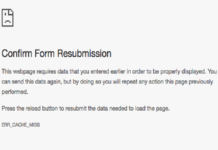Blockchain technology, like the Internet, profoundly affects the technology of human society, and blockchains are evolving and constantly trying to find their place. In any case, one thing is certain, that is, the blockchain is a disruptive technology that will fundamentally change some industries. I am convinced that open source is one of them.
At the beginning of the establishment of Bitcoin in the past ten years before Nakamoto, it attracted many followers and slowly evolved into a decentralized movement. Even for some people, blockchain technology is as profoundly affecting the technology of human society as the Internet. Of course, a large number of people believe that the blockchain is just another Ponzi scheme. In this debate, the blockchain is also evolving and constantly trying to find its place. In any case, one thing is certain, that is, the blockchain is a disruptive technology that will fundamentally change some industries. I am convinced that open source is one of them.
Open source model
Open source is a software collaborative development method and a software distribution model. Open source allows people with common interests to work together to produce things that no one in them can accomplish independently. It makes the value created by the whole much greater than the part. Sum. Open source distributes and protects through distributed collaboration tools (IRC, email, git, wiki, issue tracking, etc.), as well as open source license models, and of course non-profit funds such as the Apache Software Foundation and the Cloud Foundation Governance.
For a long time, the most curious thing about the open source model is the lack of financial incentives. In the open source world, like other aspects of human society, a lot of factions, such as some of them, think that talking about open source should not talk about money. Open source should be the inner freedom of incentives and resource behavior (such as “common ideals” “For the great things”); there are others who believe that open source needs to be externally, especially financially motivated. Although the open source project is only ideally romantic through the world’s volunteers, as far as the current status quo is concerned, in fact the main open source completion contribution is made in the case of payment. Of course, there is no doubt that we have a large number of unpaid contributors, but these contributions are temporary and recurring, or some of the sought-after projects have attracted worldwide attention. Establishing and maintaining open source projects requires companies to put a lot of effort and effort into developing, documenting, testing, and fixing defects, and it is continuous, as always, not a whim. Be aware that developing software products is something that needs to overcome a lot of difficulties. It is best to have money incentives to last.
Open source commercialization
As we all know, the Apache Software Foundation survives through donations, and of course there are other incomes: sponsorship, conference fees, and so on. But be aware that these funds are primarily used to run the foundation itself, such as providing legal protection for the project and ensuring that there are enough servers to run build programs, defect tracking, mailing lists, and more.
Similarly, the CNNF Foundation will charge membership fees and more conference fees, which are also used to run the foundation and provide resources for the project. In the years now, most of the software can’t be built on your own laptop. They are all running and testing in hundreds of servers in the cloud platform. These are the daily expenses of the Foundation. Others such as marketing activities, brand design, distribution of some small promotional items, is also a matter within the foundation. The core mission of the Foundation is to implement the right processes, interact with users, developers, and control mechanisms, and ensure that available financial resources are allocated to open source projects for mutual benefit.
It seems that everything is working fine, isn’t it? Open source projects can raise money and the foundation can be distributed fairly. So where is the problem?
What is not stated here is: value transfer between open source producers and open source consumers, direct, transparent, trusted, decentralized, automatic two-way links. For the moment, all links are one-way or indirect:
- One-way : A developer (a developer in a broad sense, can be any role in software production: code farmers, maintainers, distributors), using their ingenuity, racking their brains, and spending countless hours developing open source Projects, and submit contributions to share this value for all open source users. But basically it is wishful thinking.
- Indirect : If there is a bug in the software that affects a particular user/company, the following situations occur:
- It’s ideal to let internal developers fix bugs and then submit a pull request (PR). These companies are not always able to hire developers for specific open source projects because the average company will use hundreds of thousands. An open source project.
- Hire freelancers who specialize in this particular open source project and pay for the service. Ideally, freelancers are also submitters of open source projects, and can quickly change project code directly. Otherwise, the fix may never enter the upstream project.
- Close to companies that provide services around open source projects. These companies typically employ open source committers to influence and gain community credibility and provide products, expertise and professional services.
The third option is to maintain a successful model for many open source projects. Whether these companies provide services (training, consulting, workshops), technical support, packaging, open core, or SaaS services, it’s undeniable that they all need to hire hundreds of full-time employees to work on open source, we can see There are a lot of such companies, they have successfully established an effective open source business model, and more companies are joining the camp.
Companies that support open source projects play an important role in this ecosystem: they are an important catalyst between open source projects and users. Companies that can truly create value for their users are not just able to package great software; they are able to identify the real needs of users and gain insight into technology trends, the ability to create a complete stack or even an open source project. Ecosystems to meet these needs. They can devote themselves to a somewhat lonely and boring project, and will always support it for many years, just to stick to its value. And if a section is missing from a software stack, they can start an open source project from scratch and build a community around it. They can even buy a closed source company and then open up the project entirely (yes, maybe many readers have already guessed which company it is talking about here, yes, the features here are owned by Red Hat. .)
To sum up, the open source model based on commercialization is like this. The project is managed and controlled by a small number of individuals or companies. The individuals or companies ensure the successful release of the project, and they are commoditized and effective. In giving back to the open source ecosystem. For open source developers, management companies and end users, this is a beautiful pattern without losers. This can be a good alternative to those expensive and closed source software!
Self-supply, decentralized open source
There is no doubt that if you want to make a good reputation for your project, you have to meet some people’s expectations. For example, both the Apache Software Foundation and the Cloud Native Computing Foundation require a process of incubation and graduation. In addition to all technical and formal requirements, the project must have a healthy number of active committers and users. These are the keys to a sustainable open source project. Having source code on GitHub is fundamentally different from having an active open source project. An active open source project means the author of the code and the user who uses the code. The two groups grow spirally by exchanging value and forming an ecosystem that everyone benefits. Some project ecosystems may be small and have a short life span, and some may include multiple projects and competing service providers, with very complex interactions that last for many years. But as long as there is a value exchange, everyone benefits, and the project is developed, maintained and sustainable.
Let’s take a look at Attic, the Apache Software Foundation project, which has completed its historic mission and is moving into the final stages of its lifecycle. This is a very normal phenomenon: when a project is technically no longer suitable for its original development purpose, it usually ends naturally. Similarly, at the ASF incubation base, you will find that many projects have never graduated but have already withdrawn from the historical arena. Usually, these projects cannot build a large enough community, either because they are too biased or better. The program is replaced.
But more often than not, projects with high potential and superior technology cannot sustain themselves because they cannot form or maintain an effective ecosystem for value exchange. The current open source model and foundations do not provide developers with a framework or mechanism to get paid or let users know their requests, so that no one has a common value commitment. In this case, the result is that some projects can only maintain themselves in a commercial open source environment. In commercial open source, the company acts as a middleman and gains value between developers and users. This also adds another limitation and requires the service provider’s company to maintain some open source projects. This seems to be far from our ideal situation: users can fully and directly express their expectations of the project, developers can deliver their commitment to the project in a transparent and quantifiable way, which is a common interest and A community that intends to exchange value.
Now you can imagine that there is such a model, its working mechanism and tools can directly deal with open source users and developers. This is not only reflected in contributing code through pull requests, sending messages using mailing lists, the number of stars on GitHub, and stickers on laptops, but also in ways that users have more ways, more self-control, and transparent behavior. To influence the direction of the project.
The model can include incentives for the following behaviors:
- Funding directly for open source projects, not through software foundations
- Influence the direction of the project by voting (via token holders)
- Functional requirements driven by user needs
- Timely merge pull request
- Give rewards to those who submit defects
- Reward for better test coverage
- Reward to update the document in time
- Timely security fix
- Expert assistance, support and service
- Best budget for the project’s preachers and promoters
- Regular activity budget
- Faster email and online chat help system
- Fully understand the status of the overall project, etc.
Smart clerks may have guessed it, yes, the above talks about using blockchains and smart contracts to achieve positive interaction between end users and developers. Smart contracts allow token holders to have real power to influence the direction of the project.
The figure above shows the application of blockchain in the open source ecosystem.
In the current open source ecosystem, it is possible to use abnormal means to influence the direction of the project, such as the financial commitment of the service provider and the limited way of passing the foundation. But adding blockchain-based technology to the open source ecosystem opens up a new channel between users and developers. This is not to say that it will replace the commercial open source model; because most open source companies do a lot of intelligence. What the contract can’t do. But smart contracts can trigger a new type of open source project that provides a second-life opportunity for those overwhelmed projects. It motivates developers to claim boring pull requests, write documentation, test program code, and more, providing a direct source of value exchange between users and open source developers. Even if company support is not feasible, the blockchain can add new channels to help open source projects grow and achieve self-sustainment in the long run. It can create a new complementary model for self-sustaining open source projects – a win-win model.
Pass open source
In fact, there are already many implementations aimed at open source certification. Some of them are only focused on the open source model, and some are more general (also applicable to the open source model). The following is a list I collected:
- GitCoin , which grew up in open source, is one of the most promising open source projects in the field.
- Oscoin , a cryptocurrency for open source.
- Open collaboration , a platform that supports open source projects.
- FundYourselfNow , for project crowdfunding and ICO platforms.
- Kauri , supporting open source project documentation.
- Liberapay , a regular donation platform.
- FundRequest , a decentralized market for open source collaboration.
- CanYa , recently acquired by Bountysource , is the world’s largest open source P2P bounty platform.
- OpenGift , a new model for open source cashout .
- Hacken , a white hat token for the Hackers .
- CoinLancer , a decentralized human market.
- CodeFund , an open source advertising platform.
- IssueHunt , a fundraising platform for open source maintainers and contributors.
- District0x 1Hive , crowdsourcing and curation platform.
- District0x Fixit , GitHub Defect Reward System.
This list is still growing at the time of this writing, and it’s pretty fast, some of them will definitely disappear, and some will shift the target, but there will always be some integrations such as SourceForge , Apache Software Foundation, and GitHub. . These platforms don’t and do not need to replace these platforms, but the token model is a good complement to these platforms, which can make the open source ecosystem richer. Each project can choose its distribution model (license), management model (foundation), and incentive model (token). Either way, it will be an open source world like fresh blood!
Open and decentralized future
- Software is consuming the world
- Every company is a software company
- Open source is an innovative field
The fact is that the open source has developed into such a huge industry, it will not easily fail, and open source is too important for the world. It is impossible for a few to be manipulated or abandoned by the world to fend for itself. Open source is a shared resource system that is valuable to everyone, and more importantly, it can only be managed in such a way that all companies in the world want to have their own chips and voice in open source, however Unfortunately, we don’t have a tool or a habit to do this. Our expectation for the tool is that these tools will allow anyone to express their appreciation or neglect of the software project; it will be in producers and consumers. A direct and faster feedback loop between developers and users; it promotes a dual innovation model driven by user needs and is tracked and measured by tokens.































